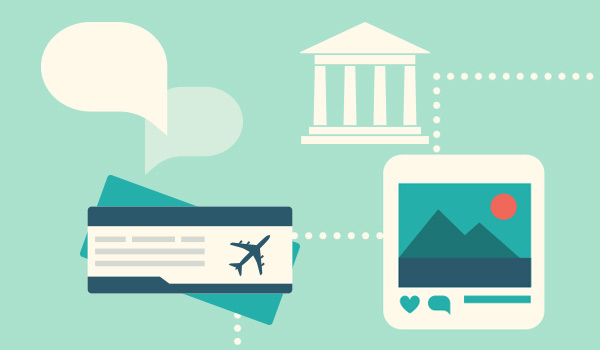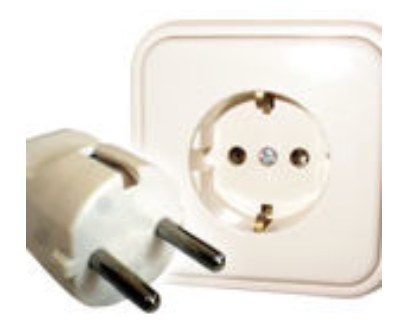Tips and trivia: essential advice
- Vivir en Madrid
- Before you arrive
- Tips and trivia: essential advice

Tips and trivia: essential advice
Tips for Barajas.
The city of Madrid is serviced by one airport. Its full name is ‘Aeropuerto Adolfo Suárez-Madrid Barajas’, but it’s commonly called ‘Aeropuerto de Barajas’, or simply ‘Barajas’.
Barajas Airport is a new, modern and bright airport with free WiFi and device charging stations. At the airport, you’ll find 4 terminals, all of which are interconnected and have direct access to the bus network (operated by EMT- Empresa Municipal de Transportes) and Madrid’s metro system (Metro de Madrid). Each terminal also has taxi ranks plus access for UBER and Cabify vehicles.
Transport Tips
After landing at Madrid airport, you’ll have quite a few options for getting to the city centre which are explained in more detail in the Transport section. However, depending on how much luggage you have with you, we recommend taking a taxi the first time you arrive. A taxi ride from the airport to the centre of Madrid costs 30 euros (flat rate) and 50 euros if you’re heading to towns on the outskirts such as Getafe or Leganés.
For future trips from the airport to the centre, we recommend you take the yellow ‘Aeropuerto-Express’ bus. A ticket costs €5 euros and will take you directly to Atocha train station (with the only stop in-between being at Cibeles square). PHOTO
Once you’re in the city, getting around the centre of Madrid and its surrounding towns is very easy. We recommend taking out a monthly travel pass that covers all of these.
Tips for Tapas
Going out for tapas in Spain is more than a tradition, it’s a way of life. When the Spanish go out for tapas, we generally eat stood up at the bar. The ‘tapa’ itself is usually a small sample of Spanish food (potato tortilla, croquettes, empanadas, etc.), so there’s no need to worry if you can’t find a table to lean on; it’s pretty easy to hold your beer glass in one hand and eat your ‘tapa’ with the other.
Tips for eating hours
A typical Spanish day might start with breakfast, not usually much more than a croissant and a coffee, before work or school, followed up at around 11 with a ‘bocata’ (sandwich) or ‘tapa’. Lunch is a hearty meal, eaten at 2 in the afternoon, topped up with a snack or ‘merienda’ at 5. Finally, dinner rounds off the day at 9 or 10 pm.
Tips on food.
‘¡Menú del Día!’ There’s plenty of options for food in Spain. On weekdays, we recommend trying out a ‘Menú del Día’ (set daily menu). Many restaurants offer this set menu, with a starter, main and dessert (each chosen from several different options), bread and a drink at a cost of between 10 and 15 euros.
The difference between a bar / tasca / taberna / mesón / cafetería / restaurante.
There are different types of bars in Spain, so we’ve decided to create a small breakdown for you here:
The word ‘bar’ is used generically to describe an establishment that serves food and drinks. ‘Tascas’, ‘tabernas’ and ‘mesones’ are all bars, but what sets them apart is that food is served informally, as they don’t often have clearly set opening hours and neither is there much of a strict protocol for service. In ‘tascas’, ‘tabernas’ and ‘mesones’, customers usually circle around the bar counter and there are usually just a handful of tables for 4 to 5 diners. The food is straightforward, the prices are bank-account friendly and you don’t normally need to book.
Cafeterias are another type of establishment, specialised in serving coffee. This means that the busiest times of the day to visit are during breakfast time (8-10:30 am) or when people are having their ‘merienda’ (5-8 am). The rest of the day, cafeterias serve light meals, snacks and basic set menus.
Restaurants are the most formal type of food-serving establishment. We head to restaurants at lunch and dinner time. Diners don’t use the bar area, and sit at tables which are normally set with a tablecloth and cutlery. The dishes are quite elaborate, the service is very attentive and the prices are usually more expensive than the other types of establishment described. It’s also a good idea to book beforehand.
Tips on the electrical system

The standard voltage in Spain is 230 V, with a frequency of 50 Hz. Our plugs and sockets are Type F (2 pins with 2 holes). If you forget to bring an adaptor, don’t worry. You can buy one at specialist shops (hardware stores), department stores and in the many convenience stores found in every Spanish city, popularly known as ‘chinos’.
Tips on... tipping
In Spain, you don’t have to leave a tip. When paying by card, we can choose to add on a little more money to the bill to be taken as a tip.
In terms of how much, it’s acceptable to add 30 or 50 cents to a total bill of €10, a euro to a bill of €20 and so on. The bigger the bill to begin with, the lower the percentage we give as a tip, and there is no fixed rate such as the 10, 15 or 20 percent often applied in other countries.
Tips on tourist passes/tours
To get the most out of your stay with us, we recommend buying one of the many tourist passes that will give you combined access to several museums, art galleries and historic buildings.
Tips for drivers
In Spain, we drive on the right-hand side of the road and navigate roundabouts in an anticlockwise direction. Be careful! Especially if you’re coming from a country where road users drive on the left.

